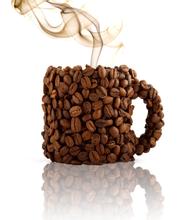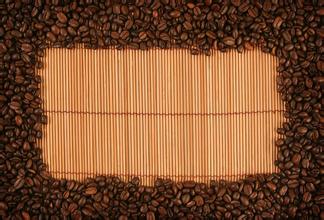What does Kenya Coffee Bean Grade ABtop mean? introduction to the characteristics of graded brands
What does Kenya Coffee Bean Grade ABtop mean? introduction to the characteristics of graded brands
Different small producing areas mean different flavor characteristics. For example, the famous Ethiopia-Haramoka (EthiopiaHarrar) is produced in southern Ethiopia near Somalia. Haramoka has wine-like aromas, blueberry or grape flavors, thick palate, fresh and bright Yega snow coffee, citrus or lemon peel aromas, and a thin palate.
However, some coffee beans have a string of names immediately after the name of the small producing area, which may be the name of a coffee farm or processing plant. For example, the long list of names of Guatemala-Antigua-Los Mokens (GuatemalaAntigua SHB- Finca Los Volcanes 02 Crop) tells us the following information:
Producing country: Guatemala (Guatemala)-Guatemala is a famous coffee producer in Central America.
Producing area: Antigua volcano (Antigua)-this is the country's famous volcanic coffee producing area.
Grading: extremely hard beans (SHB)-indicates that this coffee grows above 4500 feet above sea level.
Production Manor: Finca Los Volcanes Manor-"Finca" is the Spanish word for "Estate", meaning farm.
Harvest year: 2002-year is a reference for bakers, so the year is usually not marked on the market baked bean label.
In the dry aroma, there is a citrus aroma similar to Yega Xuefei, and the entrance has an obvious orange flavor, which makes people feel amazing. The wild flavor of Kenyan coffee is particularly prominent in this bean, with clean and bright acidity and orange flavor. There is also the feeling of grapefruit tea, but the acidity is not abrupt, very supple and harmonious, and after the acid slowly dissipates, you can feel the sweetness like honey. Kenya is a country that specializes in picking round beans and selling them separately, but Kenyan round beans are not common at home. Kiaga Farm, located between the Rutene River and Rwarai, is about 1900 meters above sea level, making it an excellent place to grow and handle quality coffee. The size of Kenya PB is much smaller than that of Kenya AA, and the bean body is round, which is conducive to uniform heating when baking. In order to retain the wild flavor unique to Kenya, moderate baking is generally used. About 40 seconds after the explosion, the beans are out of the pot. Obvious folds can be seen on the beans, the color is not dark, and consumers are easy to accept. Now we would like to introduce the full name Peaberry of PB, that is, round beans. Usually there are two seeds in a coffee fruit, which is our common coffee bean, which is curved on one side and flat on the other, similar to the shape of peanuts. We call them flat beans. The round bean is that there is only one coffee bean in a coffee fruit. The shape of the bean is oval, accounting for a very small proportion in the fruit of the whole coffee tree. The industry has not given a clear conclusion on the quality of round beans. Some people think that round beans are not as good as flat beans, while others think that round beans concentrate the nutrients of two beans on one bean, which contains more substances, so it tastes better. Personally, I have not made any analysis and comparison, but it is conceivable that round beans are selected artificially, and the overall quality is guaranteed. So it is not surprising that Kenyan coffee is recognized by many people as high-quality coffee, with the wildness of African coffee and the mellow and wild nature of American coffee, which make Kenyan coffee loved by the majority of coffee lovers. Many people are familiar with the Kenyan AA is the most common symbol of Kenyan coffee in the country, in fact, AA is a grade of Kenyan coffee, lower than AB, and above it are AA+, AA TOP (top). If you only label AA for coffee beans, generally it can only show that the coffee is AA grade, there is no specific farm or cooperative, the flavor may not be the best, it can only show that its beans are neatly up to the standard and sell well. And it is written on the label that specific farms or cooperatives or even purchasers, then this bean, whether AA or AB, is worth a try.

Important Notice :
前街咖啡 FrontStreet Coffee has moved to new addredd:
FrontStreet Coffee Address: 315,Donghua East Road,GuangZhou
Tel:020 38364473
- Prev

Flavor characteristics of Yejia Coffee beans introduction to the method of taste treatment in manor area
The Flavor characteristics of Yejia Coffee Coffee the taste treatment method in the manor producing area introduces that Yejasuefei is a small town with an elevation of 700-2100 meters, which is synonymous with Ethiopian boutique coffee. It has been a wetland since ancient times. The ancient saying "Yirga" means to settle down and "Cheffe" means a wetland. The mode of production and flavor of coffee here are so prominent that Ethiopian coffee farmers
- Next

Flavor description of Arabica coffee beans in Latin America introduction to the regional treatment of manor production
Flavor description of Arabica coffee beans in Latin America the planting of coffee trees is only the first step in coffee production. When the coffee fruits are ripe, they can be harvested through picking equipment. Two seeds (Arabica coffee beans) are then extracted from each berry. The last step is to roast coffee beans for consumption. This removes moisture and changes coffee.
Related
- Detailed explanation of Jadeite planting Land in Panamanian Jadeite Manor introduction to the grading system of Jadeite competitive bidding, Red bid, Green bid and Rose Summer
- Story of Coffee planting in Brenka region of Costa Rica Stonehenge Manor anaerobic heavy honey treatment of flavor mouth
- What's on the barrel of Blue Mountain Coffee beans?
- Can American coffee also pull flowers? How to use hot American style to pull out a good-looking pattern?
- Can you make a cold extract with coffee beans? What is the right proportion for cold-extracted coffee formula?
- Indonesian PWN Gold Mandrine Coffee Origin Features Flavor How to Chong? Mandolin coffee is American.
- A brief introduction to the flavor characteristics of Brazilian yellow bourbon coffee beans
- What is the effect of different water quality on the flavor of cold-extracted coffee? What kind of water is best for brewing coffee?
- Why do you think of Rose Summer whenever you mention Panamanian coffee?
- Introduction to the characteristics of authentic blue mountain coffee bean producing areas? What is the CIB Coffee Authority in Jamaica?

